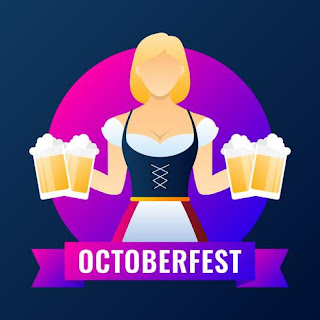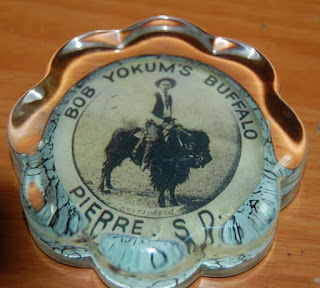In September 2016 I featured a post called “Beer on Wheels Through the Decades,” that featured a number of vehicles used over the years to haul beer barrels and cases. For reasons not readily explained, I have continued to be fascinated by the subject, continuing to collect relevant images. Shown here are a dozen examples from the U.S. and elsewhere that mark the versatility of transporting the suds, augmented with information about the companies that got the wheels rolling.
 The truck shown here could never hit a bump in on a Cleveland street, so precarious are the empty crates the driver is carrying. In a city full of ethnic German “beer barons,” an Irishman named Stephen Creedon founded the Standard Brewing Company and gave the city a beer that with “time out” for National Prohibition sold for almost 60 years. Creedon called his beer “Erin Brew” and for the German population, “Brew Brau.”
The truck shown here could never hit a bump in on a Cleveland street, so precarious are the empty crates the driver is carrying. In a city full of ethnic German “beer barons,” an Irishman named Stephen Creedon founded the Standard Brewing Company and gave the city a beer that with “time out” for National Prohibition sold for almost 60 years. Creedon called his beer “Erin Brew” and for the German population, “Brew Brau.” One reason beer trucks are interesting is that they often were designed specifically for that purpose and stand out from other vehicles of the time. A trade card from the Adams Bros. company of Findlay, Ohio, shows a custom made truck made for the Anheuser-Busch brewery of St. Louis. As early as 1865 and until 1910 Adams Bros. was associated with the foundry business. From 1911 to 1916 they manufactured trucks and a few cars. The company later changed its name to the Adams Axle Company and produced axles for car manufacturers including Durant.
One reason beer trucks are interesting is that they often were designed specifically for that purpose and stand out from other vehicles of the time. A trade card from the Adams Bros. company of Findlay, Ohio, shows a custom made truck made for the Anheuser-Busch brewery of St. Louis. As early as 1865 and until 1910 Adams Bros. was associated with the foundry business. From 1911 to 1916 they manufactured trucks and a few cars. The company later changed its name to the Adams Axle Company and produced axles for car manufacturers including Durant. This truck was commissioned in the early 1900s by the Adolph Kress Brewing Company of Sparta, Wisconsin. After the end of National Prohibition, the vehicle luckily fell into the hands of the late Richard Guerrera, a successful trucking company owner, who founded the Golden Age of Trucking Museum in Bridgeport, Connecticut. He restored the Kress truck to its pristine glory, including the variety of barrel taps and other instruments that were provided.
This truck was commissioned in the early 1900s by the Adolph Kress Brewing Company of Sparta, Wisconsin. After the end of National Prohibition, the vehicle luckily fell into the hands of the late Richard Guerrera, a successful trucking company owner, who founded the Golden Age of Trucking Museum in Bridgeport, Connecticut. He restored the Kress truck to its pristine glory, including the variety of barrel taps and other instruments that were provided. Although virtually all beer trucks ran on gasoline, this one — said to be “up-to-date in all things” — is an electric wagon. With the current emphasis on electric vehicles, this truck might seem to be ahead of its time. The owner was J. Rapp & Sons, a San Francisco bottler and wholesaler who distributed Rainier Beer of Seattle, a brewery founded in 1884 whose beer was very popular throughout the Pacific Coast.
Although virtually all beer trucks ran on gasoline, this one — said to be “up-to-date in all things” — is an electric wagon. With the current emphasis on electric vehicles, this truck might seem to be ahead of its time. The owner was J. Rapp & Sons, a San Francisco bottler and wholesaler who distributed Rainier Beer of Seattle, a brewery founded in 1884 whose beer was very popular throughout the Pacific Coast.
Nothing beats a beer truck dressed up for a parade. Even better are four beer trucks with American flags appended, even if the character displayed drinking beer looks rather seedy. This is Salt Lake City after all, where many residents are teetotalers. The Henry Wagener Brewery opened in 1864 and apparently closed in 1913 after the plant burned down. A run of almost 50 years in the heartland of the Mormon Church was no small accomplishment.
 This trade card from the Adam Scheidt Brewing Company of Norristown, Pennsylvania, shows the raised forward seating for the driver found in other beer trucks. The roof keeps him and the barrels of Lotos Export (“finest pale beer)
This trade card from the Adam Scheidt Brewing Company of Norristown, Pennsylvania, shows the raised forward seating for the driver found in other beer trucks. The roof keeps him and the barrels of Lotos Export (“finest pale beer)
out of the sun and rain. The Adam Scheidt Brewing Company was founded in the late 1870s and was incorporated in 1884. After Prohibition, the brewery was revived and did well, brewing Valley Forge Beer, Ram's Head Ale, and Prior Beer. The name was changed to the Valley Forge Brewing Company in 1963 and five years later sold to Philadelphia's largest brewer at the time, C. Schmidt & Sons.
 In my day a vehicle looking like this one was term a “jalopy.” It operated through the streets blaring music and a Blatz beer commercial. In 1875, Blatz was the first Milwaukee brewery to have a bottling department to package beer and ship nationally. It incorporated as the Valentin Blatz Brewing Company in 1889, and by the 1900s was the city's third-largest brewer. The brewery was noted for its aggressive and unusual marketing tactics.
In my day a vehicle looking like this one was term a “jalopy.” It operated through the streets blaring music and a Blatz beer commercial. In 1875, Blatz was the first Milwaukee brewery to have a bottling department to package beer and ship nationally. It incorporated as the Valentin Blatz Brewing Company in 1889, and by the 1900s was the city's third-largest brewer. The brewery was noted for its aggressive and unusual marketing tactics. If Blatz could attract attention by mounting an advertising stein on a truck, Tiger Beer could go one better by featuring an entire beer bottle, as shown here on two vehicles. Tiger Beer, a lager, was first brewed in Singapore in 1932 as a result of a joint brewing venture between Heineken and a Singapore based conglomerate, now known as Asia Pacific Breweries. Tiger currently is brewed in at least different countries. When in that part of the world, it consistently was my beer of choice.
If Blatz could attract attention by mounting an advertising stein on a truck, Tiger Beer could go one better by featuring an entire beer bottle, as shown here on two vehicles. Tiger Beer, a lager, was first brewed in Singapore in 1932 as a result of a joint brewing venture between Heineken and a Singapore based conglomerate, now known as Asia Pacific Breweries. Tiger currently is brewed in at least different countries. When in that part of the world, it consistently was my beer of choice.
Through the years many brewers have favored the “art deco” streamlined look seen in this Labatt’s truck, clearly an elegant carrier for the suds. This beer owes its beginning to John Kinder Labatt in 1847 in Ontario Canada. Although Labatt’s today is the largest brewer in Canada, it now part of an international brewing conglomerate involving Belgium, Brazil, Canada and the U.S. firms, known as Anheuser-Busch InBev SA/NV and traded on the New York Stock exchange as BUD.
 In the era of the boutique craft brewery, it seems natural that Nancy and Matt Barger in Knoxville, Tennessee, would come up with the idea for a mobile bartending service using antique trucks. This is farm truck that the Bargers have outfitted with a custom bar box. Three taps for kegs have been integrated into the design. A sign directs customers to the beer. Business has been so good that the couple now have two trucks in service as portable bars.
In the era of the boutique craft brewery, it seems natural that Nancy and Matt Barger in Knoxville, Tennessee, would come up with the idea for a mobile bartending service using antique trucks. This is farm truck that the Bargers have outfitted with a custom bar box. Three taps for kegs have been integrated into the design. A sign directs customers to the beer. Business has been so good that the couple now have two trucks in service as portable bars.  The beer truck shown here indicates that the Bargers are not the only ones with a mobile “beerstube.” It identifies as “Germany” and the background looks European but the other language used is English, making it difficult to place. Nonetheless, the mobile giant barrel with a huge tap makes an appropriate setting for the beer being dispensed. I am also intrigued by the world’s largest “church key” fastened to the side.
The beer truck shown here indicates that the Bargers are not the only ones with a mobile “beerstube.” It identifies as “Germany” and the background looks European but the other language used is English, making it difficult to place. Nonetheless, the mobile giant barrel with a huge tap makes an appropriate setting for the beer being dispensed. I am also intrigued by the world’s largest “church key” fastened to the side.
Finally, if a brewery must transport its suds through city streets, why not attract attention by fashioning the tank in the shape of a beer can. “Old Style” was the first brand created by the G. Heileman Brewing Company of La Crosse, Wisconsin. Founded by Gottlieb Heileman in 1858, the brewery survived National Prohibition by selling “near-beer” (less than 0.5% alcohol) and malt syrup. After Repeal it resumed full brewery operations until 1996 when it was acquired by Stroh’s.
There they are: A dozen trucks spanning most of the Twentieth Century. Their purposes differed. Some were vehicular billboards, advertising their brands as they plied the streets. Others were mobile barrooms, devoted to bringing the saloon to consumers rather than the consumer to a saloon. Still others were simply utilitarian motors for the job of carting barrels and bottles. All of them, however, help make the case for the beer truck as special in automotive history.












































